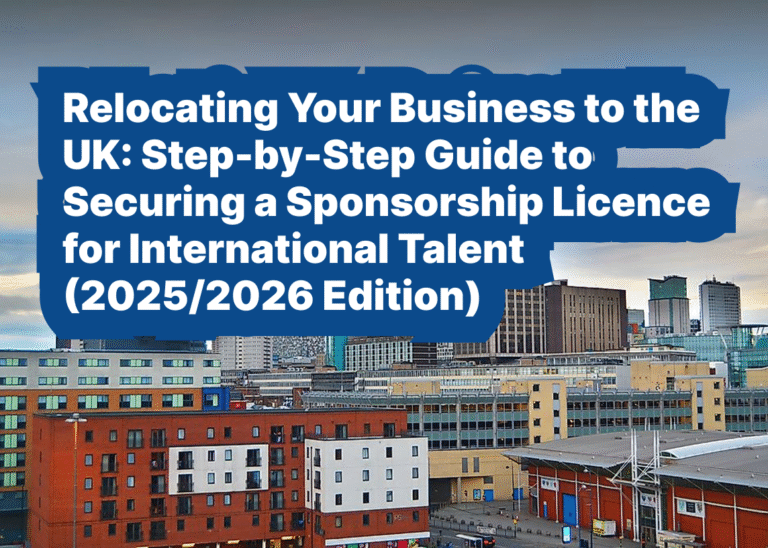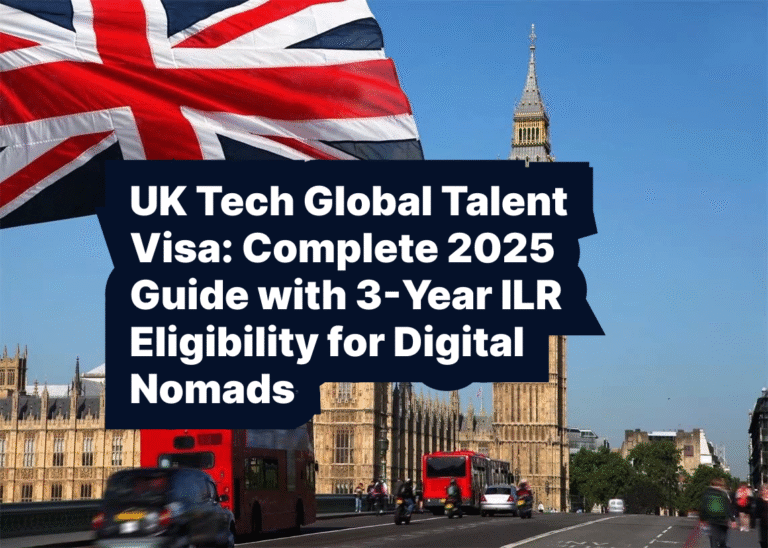For Immigrants around the globe, the United States remains a beacon of opportunity. A career in the U.S. offers not only a chance to contribute to some of the world’s most innovative companies but also the potential for significant financial and professional growth. The key to unlocking this dream for international talent is securing a job with visa sponsorship. As we look at the landscape of 2025, the U.S. job market, particularly in high-demand sectors, continues to offer over 85,000 opportunities for skilled foreign workers, with salaries that can reach and exceed $120,000 annually.
This comprehensive guide delves into the specifics of this dynamic job market, providing a detailed roadmap from the initial job search to settling into your new life in the U.S. We will explore the various visa options, outline a step-by-step application process, offer crucial tips for success, and provide a practical guide for your life as a new immigrant.
Understanding the Visa Landscape
The term “visa sponsorship” is often used interchangeably with the H-1B visa, but the reality is more nuanced. While the H-1B is the most common non-immigrant visa for professional workers, it is by no means the only option.2 A successful job search begins with understanding which visa category you might qualify for, as this will dictate your strategy and the types of companies you should target.
1. H-1B Visa: The Lottery-Based Pathway
The H-1B visa is designed for “specialty occupations” that require at least a bachelor’s degree or its equivalent.3 This is the primary visa for professionals in fields like IT, engineering, and finance.4 The U.S. government sets an annual cap on new H-1B visas, which currently stands at 85,000—65,000 for the general category and 20,000 reserved for those with a U.S. master’s degree or higher.5
- The H-1B Lottery: Due to overwhelming demand, H-1B petitions are selected through an annual lottery.6 The registration period typically occurs in March, with the lottery selection happening shortly after.7 While the FY 2026 lottery has been completed, planning for the FY 2027 season should be a priority for aspiring applicants.
- Cap-Exempt Employers: A significant number of visa-sponsored jobs are available outside of the annual lottery.8 This includes positions at non-profit research organizations, universities, and government research labs.9 These employers can file H-1B petitions at any time of the year, providing a crucial alternative for those who missed the lottery or are seeking immediate employment.
2. Other Non-Immigrant Visas
- L-1 Visa (Intra-Company Transferee): This is an excellent option for individuals who have been employed by a multinational company with a U.S. office. It allows the company to transfer a manager, executive, or an employee with specialized knowledge to its U.S. branch.10
- O-1 Visa (Extraordinary Ability): For individuals who have a high level of achievement in the sciences, arts, education, business, or athletics.11 This visa requires extensive documentation of awards, publications, and other forms of international recognition.
- E-3 Visa (Specialty Occupation): A visa exclusively for Australian citizens. It mirrors the H-1B in its requirements but is not subject to a lottery.
3. Immigrant Visas (Green Cards)
For those seeking permanent residency from the outset, employment-based green cards are the target.
- EB-1 (Extraordinary Ability/Multinational Manager): This is the highest preference category for those with exceptional talent or multinational executives/managers.12
- EB-2 (Advanced Degree/Exceptional Ability): The most common green card category for professionals with a master’s degree or a bachelor’s degree plus five years of progressive work experience.
- EB-3 (Skilled Workers/Professionals): For skilled workers with at least two years of experience or professionals with a bachelor’s degree.
A common pathway for many immigrants is to enter the U.S. on a temporary work visa like the H-1B and then have their employer sponsor them for an employment-based green card (EB-2 or EB-3) to secure long-term residency.
Step-by-Step Guide: How to Apply for Visa-Sponsored Jobs
The journey to a visa-sponsored job is a multi-step process that requires meticulous preparation and a proactive approach.
Step 1: Build Your Professional Profile
- Update Your Resume and LinkedIn: U.S. resumes are typically concise (one to two pages) and focus on quantifiable achievements rather than just a list of duties. For example, instead of “Managed a team of developers,” write “Led a team of 5 developers to deliver Project X, resulting in a 15% increase in efficiency.” Your LinkedIn profile should be fully optimized, showcasing your skills, experience, and professional network.
- Secure U.S. Certification and Education (if applicable): For many fields, particularly healthcare and some engineering roles, U.S. licensure or a degree from a U.S. institution can significantly improve your chances. If you have a foreign degree, it will need to be evaluated for U.S. equivalency.
Step 2: Identify Sponsoring Companies
- Use Specialized Job Boards: Websites like MyVisaJobs, Hired, and Indeed have dedicated filters for visa-sponsored jobs.13 Use these platforms to find companies with a history of hiring foreign talent.
- Research H-1B Data: The U.S. Department of Labor publishes a database of all companies that have filed for Labor Condition Applications (LCA) for H-1B visas.14 This data can reveal which companies are active sponsors and for what job titles and locations.
- Target “Cap-Exempt” Employers: If you are not in a position to wait for the H-1B lottery, focus your job search on universities, non-profits, and government research labs, as they are not subject to the annual cap.15
Step 3: Network and Connect
- Leverage LinkedIn: Connect with recruiters and hiring managers at your target companies.16 Send personalized messages explaining your background and interest in a sponsored role. Join industry-specific groups to stay informed about job openings and trends.
- Attend Virtual Career Fairs: Many U.S. companies now host or participate in virtual career fairs, which can be a great way to meet recruiters and learn about job opportunities without having to travel.
Step 4: The Application and Interview Process
- Tailor Each Application: Do not use a generic cover letter.17 Each application should be specifically tailored to the company and the job description, demonstrating that you have researched the role and can add value.
- Prepare for Multiple Interview Rounds: U.S. interviews often involve a series of interviews, including a screening call with an HR recruiter, a technical interview with a hiring manager or team members, and a final interview with senior leadership.
- Be Ready to Discuss Sponsorship: While your resume should not explicitly state that you need sponsorship, it is important to be prepared to discuss it. When asked, state clearly and professionally that you require visa sponsorship and that you are an excellent candidate who is prepared to navigate the process.
Step 5: The Visa Filing Process
Once you have a job offer, the employer takes the lead. They will work with their immigration attorney to file the necessary paperwork. This is a complex legal process that includes:
- Labor Condition Application (LCA): Filed with the Department of Labor (DOL) to confirm the job’s prevailing wage and working conditions.18
- H-1B Registration: The employer registers your application for the H-1B lottery (if applicable).19
- H-1B Petition (Form I-129): If selected, the employer files a detailed petition with U.S. Citizenship and Immigration Services (USCIS).20
- Consular Interview: Upon approval of the petition, you will attend a visa interview at a U.S. embassy or consulate in your home country.21
Earning Potential and Salary Expectations
The potential to earn up to $120,000 annually is a realistic goal for many visa-sponsored professionals, especially in the tech, healthcare, and engineering sectors.
- Information Technology: Software engineers, data scientists, and cybersecurity analysts are consistently at the top of the salary scale. A mid-to-senior level software engineer in a major tech hub like San Francisco or New York can command salaries well over $150,000.22
- Healthcare: Physicians and surgeons can earn several hundred thousand dollars annually, with salaries often exceeding $250,000.23 Even allied health professionals like physical therapists and medical scientists are in high demand with competitive pay.
- Engineering: Aerospace, mechanical, and robotics engineers with a few years of experience can easily find roles paying six figures, especially at large companies like Boeing and Tesla.
The “prevailing wage” is a critical factor. The U.S. Department of Labor sets minimum wage requirements for visa-sponsored jobs based on occupation and geographic location.24 Employers must pay at least this amount, ensuring that foreign workers receive fair compensation and that local workers are not undercut.
Comparison Table of Visa Types
| Visa Type | Primary Purpose | Key Requirements | Pros | Cons |
| H-1B | Non-immigrant, specialty occupation | Bachelor’s degree or equivalent in a specialty field | Dual intent, flexible | Lottery-based, annual cap |
| L-1 | Intra-company transfer | 1+ year employment with a multinational company | No annual cap, dual intent | Must be transferred within the same company |
| O-1 | Extraordinary ability | High level of achievement in a specific field | No annual cap, can be self-petitioned | High bar for qualifications and evidence |
| EB-2 | Immigrant, permanent residence | Advanced degree or exceptional ability | Leads to a Green Card | Can have long wait times due to backlogs |
| EB-3 | Immigrant, permanent residence | Bachelor’s degree or 2 years of skilled work experience | Leads to a Green Card | Can have very long wait times due to backlogs |
Tips for Success: Beyond the Application
Securing the visa is just the beginning. Thriving in the U.S. workplace requires cultural adaptation and a proactive mindset.25
- Mastering Workplace Communication: U.S. workplace culture often values direct and transparent communication. Be prepared to voice your opinions, ask questions, and be a proactive contributor in meetings.
- Networking is Key: Your professional network is a crucial asset.26 Attend industry conferences, join professional organizations, and maintain an active presence on platforms like LinkedIn to build relationships and stay informed.27
- Embrace Professional Development: The U.S. workplace is highly competitive. Stay ahead by continuously upgrading your skills through online courses, certifications, and advanced degrees.
- Understand U.S. Work Norms: Be prepared for a fast-paced environment where deadlines are often tight. Punctuality, a strong work ethic, and a positive, can-do attitude are highly valued.
Settling in as a New Immigrant: A Practical Guide
Moving to a new country is an exciting opportunity, but it also comes with challenges that go beyond finding a job. Successfully settling in involves securing housing, building financial stability, integrating socially, navigating healthcare, and staying on top of legal requirements. Here’s a detailed guide to help you transition smoothly.
1. Housing & Accommodation
- Research neighborhoods: Look for areas that match your lifestyle and budget. Factors to consider include proximity to work, school quality (if you have children), safety, public transportation, and amenities.
- Resources:
- Rental platforms: Zillow, Apartments.com, Craigslist Housing.
- Short-term stays: Airbnb or extended-stay hotels can serve as a temporary option while you search for permanent housing.
- Tip: Many landlords require a U.S. credit history, which new immigrants usually don’t have. Consider offering a higher security deposit or asking your employer for a housing letter.
2. Finances & Banking
- Open a U.S. bank account as soon as possible. Major banks (Chase, Bank of America, Wells Fargo, Citi) often have “newcomer programs” that accept foreign IDs/passports.
- Build credit history: Apply for a secured credit card or use credit-builder programs, since a U.S. credit score is essential for renting apartments, getting loans, or even some jobs.
- Taxes:
- Learn the basics of U.S. taxation: Federal, state, and sometimes city taxes apply.
- Apply for your Social Security Number (SSN) early—it’s needed for taxes, employment, and banking.
- Tip: Use budgeting apps like Mint or YNAB to track expenses and adjust to the cost of living in your new city.
3. Social Integration & Community Building
- Join clubs and networks: Use Meetup.com to find groups around hobbies, fitness, or professional interests.
- Volunteer: Nonprofits often welcome newcomers, and volunteering is a great way to meet locals and practice English (if it’s not your first language).
- Cultural adaptation: Learn local customs and workplace etiquette (e.g., small talk, punctuality, personal space).
- Tip: Many cities have immigrant support organizations (like International Rescue Committee or local immigrant centers) that provide mentorship and community connections.
4. Healthcare & Insurance
- Understand U.S. health insurance:
- Employer-provided insurance is common, but compare plans carefully (look at premiums, deductibles, co-pays, and coverage networks).
- If your job doesn’t provide coverage, you can purchase insurance via the HealthCare.gov marketplace.
- Primary care: Find a primary care physician (PCP) to handle routine checkups and referrals.
- Emergency care: Be aware that emergency visits can be very costly without insurance.
- Tip: Keep a list of nearby urgent care centers—these are usually cheaper than emergency rooms for non-life-threatening issues.
5. Legal & Immigration Resources
- Stay updated on visa requirements: Immigration laws can change quickly. Track renewal deadlines and document requirements.
- Maintain status: Always keep copies of your immigration papers, work authorization, and ID safe (both physical and digital copies).
- Legal assistance: Keep contact with your immigration attorney or local immigrant advocacy groups for advice.
- Tip: Subscribe to updates from U.S. Citizenship and Immigration Services (USCIS.gov) so you’re aware of any changes in policies.
6. Education & Skills Development (Optional but Important)
- If you plan to study or bring children:
- Public schools are free for children up to high school.
- Many states offer adult ESL (English as a Second Language) programs at community colleges.
- For career growth: Certifications or short courses in your field can make you more competitive in the U.S. job market.
Final Advice
Settling in takes time. Focus on one step at a time—secure your housing and finances first, then expand into building a community and adapting culturally. Every challenge is part of the journey toward making your new country feel like home.
The pursuit of a visa-sponsored job in the United States in 2025 is a journey that requires diligence, a clear strategy, and a great deal of patience. The opportunities are vast, particularly for skilled professionals in technology, healthcare, and engineering, with many positions offering salaries that provide a very comfortable living. By understanding the various visa pathways, preparing a competitive application, and adapting to the U.S. work and social culture, you can turn the dream of a successful career in the U.S. into a tangible reality. The process is a testament to your skills and determination, and for those who succeed, the rewards of professional growth, financial stability, and a new life are immeasurable.







